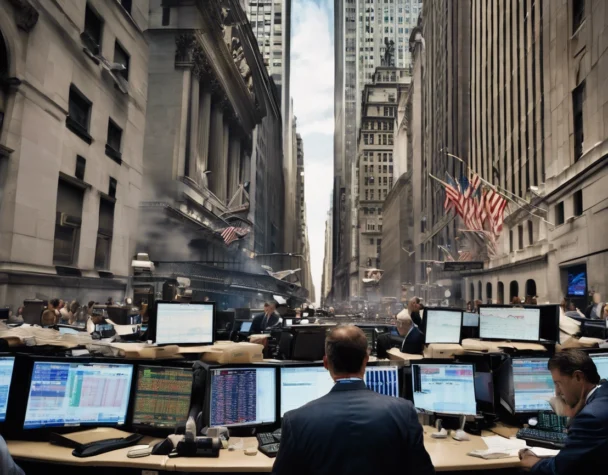
Wall Street Wavers as Tariff Turmoil and Tech Sanctions Rattle Investor Confidence
Wed, April 16, 2025Tech Sanctions and Tariffs Push Wall Street Into Uncertain Territory
Wall Street ended Tuesday’s session on shaky ground, with the S&P 500 closing at 5,396.63, down 0.2%, as investors weighed mounting geopolitical risks and regulatory shocks. The market has struggled to maintain direction amid the U.S. administration’s aggressive tariff strategy and fresh tech-related export controls targeting China.
After-hours trading reflected deeper concerns, especially in the semiconductor sector. Nvidia shares took a hit following reports of new U.S. restrictions on high-performance chip exports to China, which threatens to disrupt global supply chains and innovation strategies in AI and data processing. The tech giant’s stumble dragged broader futures into the red, setting a cautious tone for the next trading session.
Meanwhile, the 10-year Treasury yield dipped to 4.33%, down from recent highs. This suggests a temporary return of risk-off sentiment, as investors seek refuge in safer assets amidst persistent volatility. The Cboe Volatility Index (VIX) remained elevated, underscoring investor unease over the evolving macro landscape.
For live updates and ongoing market coverage, see this Bloomberg report.
Mixed Analyst Forecasts as Wall Street Eyes Recovery or Retreat
Market experts remain divided on what’s next for U.S. equities. Bullish voices like Tom Lee of Fundstrat suggest that recent market movements may signal a bottoming process, particularly as the VIX dips below the key psychological threshold of 31—a trend that historically coincided with rebounds in both 2008 and 2020.
However, other analysts are urging caution. JPMorgan strategist Dubravko Lakos recently revised his firm’s year-end forecast for the S&P 500 down to 5,200, citing unresolved tariff disputes, potential earnings downgrades, and a general atmosphere of economic uncertainty. This marks a significant downgrade from the bank’s earlier bullish estimate of 6,500, reflecting a more defensive posture amid potential shocks.
Wall Street forecasts for the rest of 2025 now range from 5,200 to 7,000, depending on how quickly trade conflicts are resolved and how inflation trends evolve. The bearish camp points to persistent global headwinds, while optimists highlight strong fundamentals and resilient corporate earnings in sectors like financials and energy.
For deeper insight into the shifting market outlook, refer to this MarketWatch analysis.
Wednesday’s Trading Outlook: Investors Brace for More Volatility
Looking ahead to the April 16 session, futures are signaling a slightly negative open, with S&P 500 contracts down nearly 0.8%. Traders will be watching closely for developments in U.S.-China negotiations, any further commentary from the Federal Reserve, and the latest earnings reports—especially from companies vulnerable to international trade dynamics.
While markets have shown resilience before, the balance between geopolitical developments and domestic economic indicators will likely dictate short-term direction. Until greater clarity emerges, volatility may remain the name of the game.

